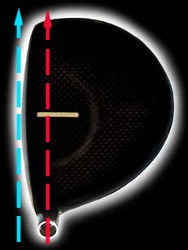
Face Progression
Face progression is an important term in golf that refers to the positioning of the clubface in relation to the leading edge of the golf club. It plays a crucial role in determining the direction, trajectory, and accuracy of your shots. Understanding face progression can significantly impact your game and help you achieve consistent and desirable results on the golf course.
- Definition: Face progression is the distance between the leading edge of the golf club and the front of the clubface when looking down from address position.
The face progression is often expressed as a measurement in millimeters or as a percentage relative to the clubhead's size. It differs from club to club and is mainly influenced by the design and type of club. Typically, a golf club with a higher face progression will have the leading edge positioned further ahead of the clubface, while a club with lower face progression will have the leading edge closer to the clubface.
Understanding the significance of face progression is essential because it can affect the club's performance in various ways. The position of the leading edge concerning the clubface often determines how the club interacts with the turf, the ball flight, and the timing of impact. Here are some key points to consider regarding face progression:
- The face progression directly affects the club's playability, forgiveness, and intended shot shape. Clubs with higher face progression are typically more forgiving and promote a draw bias. Clubs with lower face progression, on the other hand, often promote a fade or more workability but may require greater skill.
- For irons, face progression is generally consistent throughout the set. However, certain irons, such as wedges, may have a lower face progression for increased versatility around the greens.
- With drivers and fairway woods, face progression varies more widely. Game improvement drivers often have higher face progression to assist in achieving a draw for maximum distance and forgiveness.
- Advanced golfers who prefer to shape their shots may opt for clubs with lower face progression, as their skills allow them to control the ball flight more effectively.
It's worth noting that face progression should be considered in conjunction with other club specifications such as loft, lie angle, and clubhead size to optimize performance. Always consult with a knowledgeable club fitter or professional to determine the ideal face progression for your game and swing characteristics.
In summary, face progression is essential in golf as it affects the club's performance, playability, and shot shape. Understanding how face progression influences your equipment can help you make more informed decisions when selecting golf clubs and ultimately improve your overall game.






